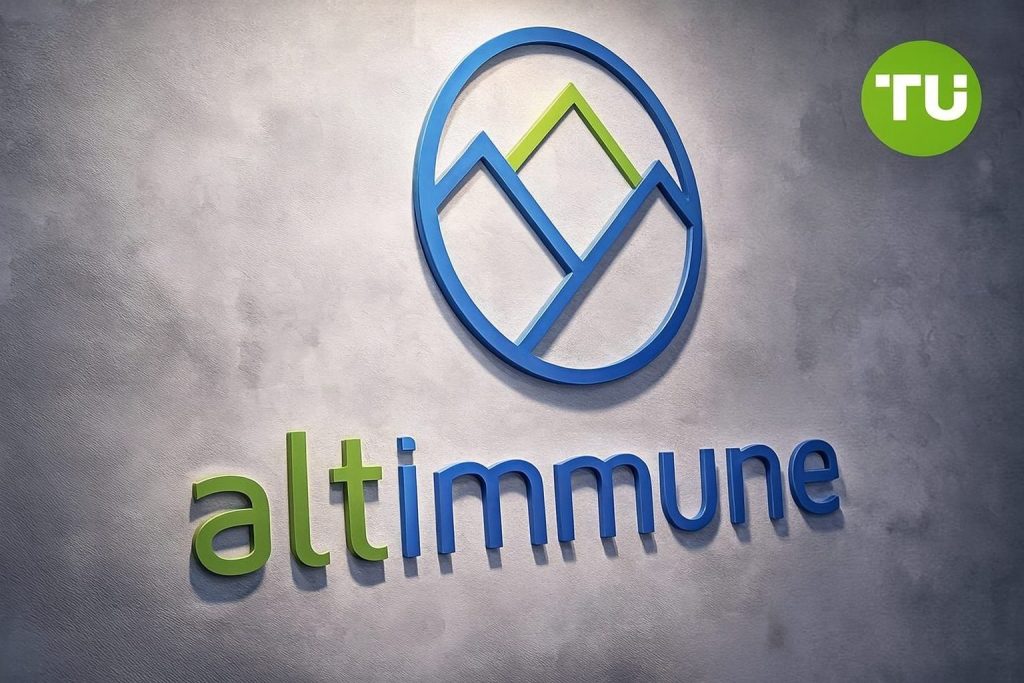Philip Morris International Inc. (NYSE: PM) enters Tuesday’s session under pressure after a sharp pullback, even as fundamentals, dividends and its smoke‑free pivot remain in focus.
PM stock at a glance on 25 November 2025
- Latest price: roughly $151 per share, based on Monday’s close and the latest after‑hours indications. [1]
- Move on Monday (Nov. 24): down about 2.7% from Friday’s $155.24 close to around $151, with the stock falling in 6 of the last 10 sessions and down roughly 2.6% over that period. [2]
- 52‑week range:$116.12–$186.69. At current levels, PM trades about 19% below its 52‑week high and roughly 30% above its 52‑week low. [3]
- Market capitalization: around $235–$242 billion with approximately 1.56 billion shares outstanding, making PM one of the world’s larger consumer‑staples names. [4]
- Dividend: quarterly dividend of $1.47 per share (annualized $5.88) after an 8.9% increase announced in September 2025. Forward dividend yield is roughly 3.8–3.9% at today’s price. [5]
- Valuation: various data providers currently place PM’s trailing P/E ratio in the low‑to‑mid‑20s (roughly 21–28x), notably higher than Altria’s ~11x multiple. [6]
- Next major catalyst: the next earnings release is currently projected for early February 2026 (around 5 February). [7]
Against this backdrop, several fresh headlines and recent corporate moves are steering sentiment around Philip Morris International on November 25, 2025.
How Philip Morris stock is trading into Tuesday
Monday’s nearly 3% slide left PM near $151, extending a short‑term downtrend that has seen the stock ease by just over 2% in the past two weeks and modestly negative over the last month. [8]
Despite the recent pullback, longer‑term performance remains strong:
- Over the past 12 months, PM has delivered mid‑teens percentage gains, outpacing many defensive peers. [9]
- A recent analysis highlighted that shareholders have enjoyed roughly 156% total return over five years, underscoring how dividends and price appreciation have compounded. [10]
Technically, PM is now:
- Well off its June 2025 peak above $186,
- But still comfortably above its January low near $116, according to 52‑week data from multiple providers. [11]
Short‑term trading services note that Monday’s decline came on elevated volume and mark the stock as having fallen in most of the last 10 sessions, a pattern they suggest could signal heightened near‑term volatility. [12]
Freshest headlines for PM on 25 November 2025
1. Big institutions are moving in opposite directions
Prudential Financial increases its stake
A new filing highlighted in a MarketBeat report today shows Prudential Financial Inc. boosting its position in Philip Morris International by 88.9% in the second quarter. The asset manager added just over 1 million shares, bringing its total to about 2.14 million shares, or roughly 0.14% of the company, valued at around $389 million at the time of filing. [13]
Franklin Resources trims holdings
By contrast, Franklin Resources Inc. cut its PM stake by 20.8%, selling roughly 3.36 million shares in the same period and ending with 12.78 million shares (about 0.6% of its portfolio, and the fund’s 28th‑largest position). [14]
Taken together, the filings underline a mixed institutional picture: some large investors appear to be buying the recent weakness, while others continue to take profits or rebalance away from tobacco‑exposed names.
2. Billionaires rotate out of PM – and towards tech
Over the weekend, a widely circulated Motley Fool piece (republished on several financial portals) drew attention to a “billionaire exodus” from Philip Morris. It cites 13F filings showing that billionaire Stanley Druckenmiller’s Duquesne Family Office exited its nearly 816,000‑share position in PM during the third quarter of 2025, while reallocating capital to high‑growth technology names such as Alphabet. [15]
Separate coverage tracking Druckenmiller’s portfolio indicates that PM had previously been a sizeable holding, and that the billionaire had been gradually trimming the position through 2025 before fully exiting. [16]
This billionaire selling has been framed as:
- A sign of shifting sentiment in some hedge‑fund circles away from regulated “sin” stocks and toward AI and mega‑cap tech, and
- A potential explanation for PM’s weakness since mid‑year, despite strong earnings.
At the same time, another widely read article – “1 Value Stock That Will Be Worth More Than Palantir by the End of 2026” – argues the opposite, suggesting that Philip Morris is fundamentally undervalued compared with richly priced growth names and could ultimately command a higher market cap than Palantir. [17]
The result is a tug‑of‑war narrative: some high‑profile investors are cashing out, while other commentators characterize PM as a classic cash‑rich value play.
3. Q3 results: smoke‑free business hits 41% of revenue and guidance rises
On 21 October 2025, Philip Morris reported strong third‑quarter results, which continue to underpin the bullish fundamental story behind the stock. [18]
Key points from Q3 2025:
- Smoke‑free products (including IQOS heated tobacco and ZYN nicotine pouches) accounted for about 41% of total net revenues and over 42% of gross profit, up several percentage points from a year earlier. [19]
- Smoke‑free shipment volumes rose around 16–17%, with smoke‑free net revenues up about 18% and smoke‑free gross profit up roughly 19–20%. [20]
- Reported diluted EPS grew about 13% to $2.23, while adjusted diluted EPS rose to roughly $2.24, up in the mid‑teens percentage range year on year. [21]
Management also raised full‑year 2025 adjusted EPS guidance for the third time this year, targeting a range in the mid‑$7.40s per share, depending on currency assumptions. [22]
Reuters noted that the improved outlook was driven by:
- Stronger‑than‑expected ZYN nicotine‑pouch volumes, and
- Continued rapid adoption of smoke‑free products in markets across Europe, Asia and the U.S. [23]
This Q3 performance contrasts with the second quarter of 2025, when PMI missed revenue expectations as cigarette volumes fell and shares sold off on the news, even though smoke‑free volumes and profits remained robust. [24]
4. Dividend raised again – and still growing
Income is a major part of the PM story, and the company reinforced that in September 2025:
- The board approved an 8.9% increase to the regular quarterly dividend, from $1.35 to $1.47 per share, taking the annualized payout to $5.88. [25]
- The new dividend was paid on 20 October 2025 to shareholders of record on 3 October. [26]
PMI highlights that it has raised its dividend every year since listing in 2008, for a total increase of around 220% over that period, equating to a compound annual growth rate of about 7%. [27]
At today’s price near $151, that translates into a forward yield just under 4%, which is higher than the broader U.S. market but lower than some U.S. tobacco peers that have not pivoted as aggressively toward smoke‑free products. [28]
5. Debt redemption: cleaning up a 2026 maturity
On 17 November 2025, Philip Morris announced plans to redeem the entirety of its outstanding 4.875% notes due February 13, 2026, with $1.7 billion of principal still outstanding. The redemption is scheduled for 4 December 2025. [29]
The notes will be redeemed at the greater of:
- 100% of principal, or
- A make‑whole amount based on the present value of remaining payments, calculated off a U.S. Treasury rate plus 15 basis points, plus accrued interest. [30]
For equity investors, the key takeaway is that PMI is:
- Managing its near‑term maturity wall proactively,
- Likely reducing interest expense on relatively high‑coupon debt, and
- Signaling confidence in its cash‑generation capacity ahead of 2026.
6. New corporate structure: PMI International and PMI U.S.
Earlier in November, PMI unveiled a significant organizational reshuffle to align reporting and management with its smoke‑free ambitions. [31]
Effective 1 January 2026, the company will:
- Create two main business units: PMI International and PMI U.S., both reporting directly to CEO Jacek Olczak.
- Recast its reporting into three segments:
- International Smoke‑Free
- International Combustibles
- U.S. [32]
The U.S. unit will focus on:
- Scaling ZYN in the nicotine‑pouch market, and
- Building a meaningful IQOS heated‑tobacco franchise in the U.S., which management sees as crucial for long‑term growth. [33]
Internationally, PMI International will continue to push multicategory smoke‑free offerings while “harvesting” the legacy cigarette business to fund the transition. [34]
This structural change also sets investors up for cleaner segment disclosure starting in 2026, allowing the market to value:
- Smoke‑free operations, and
- Traditional combustibles
more distinctly.
7. Climate transition plan: net‑zero by 2040
On 3 November 2025, PMI published its second Climate Transition Plan (CTP 2025), outlining how the company aims to reach net‑zero greenhouse‑gas emissions across its value chain by 2040. [35]
Highlights include:
- Targeting carbon neutrality in its own operations (Scope 1+2) by the end of 2025, a milestone the company says it remains on track to meet. [36]
- By 2040, aiming for:
- 72% reduction in Scope 3 “Forest, Land and Agriculture” emissions,
- 90% reduction in industrial Scope 1+2+3 emissions, and
- Net‑zero emissions across the full value chain. [37]
The plan emphasizes:
- Energy‑efficiency and renewable power in factories,
- Supply‑chain decarbonization, and
- Nature‑based and logistics initiatives across Scope 3 emissions. [38]
For shareholders, this matters because climate risk is increasingly factored into valuation multiples, financing costs and index inclusion, especially in Europe.
8. How Wall Street and quant models see PM today
Analyst price targets
A mid‑November note from Barclays, summarized by GuruFocus, reaffirmed an “Overweight” rating on PM but cut the 12‑month price target from $220 to $180. [39]
That same piece collated broader Street views:
- Average analyst target price around $184 per share, with a range from $151 to $220.
- Consensus recommendation of roughly 1.9 on a 1–5 scale, corresponding to an “Outperform” / weak “Buy”. [40]
In other words, analysts still skew positive, but recent target cuts suggest tempered expectations after PM’s big run earlier in 2025.
Valuation models and P/E
Several data providers show PM trading on a premium multiple to many consumer‑staples and tobacco peers:
- Trailing P/E estimates cluster roughly between 21x and 28x, depending on methodology and which period’s earnings are used. [41]
- A relative‑valuation model from ValueInvesting.io, based on P/E multiples, currently calculates a “fair value” around the mid‑$110s, implying downside vs. the current mid‑$150s share price, though such models are highly assumption‑dependent. [42]
At the same time, PM’s market cap has risen roughly 20% over the past year to about $235–$242 billion, reflecting strong share‑price and earnings growth. [43]
9. The bigger picture: from cigarettes to smoke‑free – and the risks
Taken together, the latest data and headlines reinforce a familiar but evolving story:
- Transformation continues:
- Financial strength:
- PM continues to generate high margins and strong cash flow, supporting regular buybacks in past years, rising dividends and the ability to refinance or redeem debt early. [46]
- Key risks investors are weighing now:
- Regulation and litigation: tobacco and nicotine products remain heavily regulated and subject to litigation risk; new rules on nicotine pouches or flavored products could affect ZYN or IQOS growth in key markets. [47]
- Execution in the U.S.: PM is still early in its direct U.S. foray; under‑ or over‑performance of ZYN and IQOS in the U.S. will heavily influence the bull and bear case. [48]
- Valuation: After a big multi‑year run and with the stock still trading at a premium multiple to peers, some investors – including notable billionaires – appear concerned about near‑term downside if growth slows or regulation tightens. [49]
Importantly, while PMI emphasizes that smoke‑free products reduce exposure to many of the harmful constituents found in cigarette smoke, no nicotine product is risk‑free, and health authorities continue to stress that people who do not use tobacco or nicotine should not start. [50]
Bottom line for 25 November 2025
On November 25, 2025, Philip Morris International stands at an interesting crossroads:
- The stock price has pulled back to around $151, nearly 20% below its 52‑week high, even as fundamentals, dividends and guidance remain strong. [51]
- Recent news is mixed:
- Institutional buyers like Prudential are adding to positions,
- Others – including Franklin Resources and several billionaire investors – are trimming or exiting, and
- Wall Street is nudging targets lower while still broadly rating the stock Outperform/Buy. [52]
- Strategically, PM continues to lean hard into smoke‑free products, with a new organizational structure, an updated climate plan, and a debt‑reduction move all pointing toward a company trying to future‑proof its business model. [53]
For investors following PM today, the question isn’t whether the company is profitable – it clearly is – but how much of that success is already embedded in the share price, given:
- A nearly 4% dividend yield,
- A premium earnings multiple, and
- Both regulatory and competitive uncertainty around its next growth phase.
As always, anyone considering PM stock should do their own research, think carefully about their risk tolerance, and, if needed, consult a qualified financial adviser. This article is for information only and is not investment advice.
References
1. finance.yahoo.com, 2. stockinvest.us, 3. www.financecharts.com, 4. companiesmarketcap.com, 5. www.pmi.com, 6. companiesmarketcap.com, 7. stockinvest.us, 8. stockinvest.us, 9. www.financecharts.com, 10. finance.yahoo.com, 11. www.financecharts.com, 12. stockinvest.us, 13. www.marketbeat.com, 14. www.marketbeat.com, 15. www.fool.com, 16. stockcircle.com, 17. www.nasdaq.com, 18. www.pmi.com, 19. www.pmi.com, 20. www.pmi.com, 21. www.pmi.com, 22. www.reuters.com, 23. www.reuters.com, 24. www.reuters.com, 25. www.pmi.com, 26. www.pmi.com, 27. www.pmi.com, 28. www.digrin.com, 29. www.gurufocus.com, 30. www.gurufocus.com, 31. www.businesswire.com, 32. www.businesswire.com, 33. www.businesswire.com, 34. www.businesswire.com, 35. www.pmi.com, 36. www.pmi.com, 37. www.pmi.com, 38. www.pmi.com, 39. www.gurufocus.com, 40. www.gurufocus.com, 41. companiesmarketcap.com, 42. valueinvesting.io, 43. stockanalysis.com, 44. www.pmi.com, 45. www.pmi.com, 46. www.pmi.com, 47. www.businesswire.com, 48. www.businesswire.com, 49. www.fool.com, 50. en.wikipedia.org, 51. www.indmoney.com, 52. www.marketbeat.com, 53. www.businesswire.com







